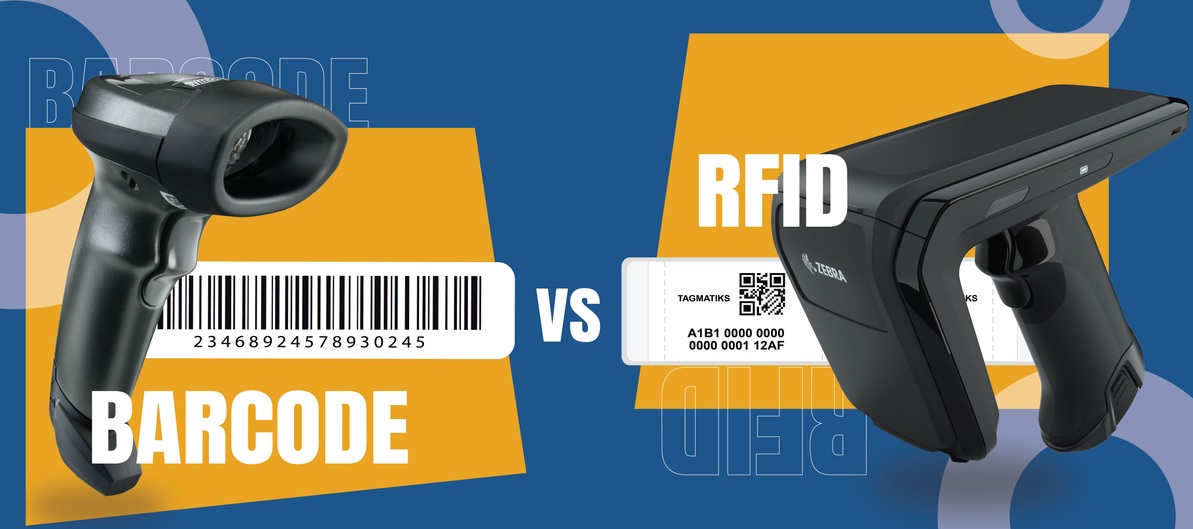In today’s fast-paced world, the demand for efficient, reliable, and cost-effective inventory management solutions is higher than ever. Two technologies stand at the forefront of tracking and management systems: barcodes and RFID (Radio Frequency Identification). While both serve a similar purpose—tracking and identifying products or assets—their approaches and benefits differ significantly. This article explores the core differences between barcodes and RFID to help you make an informed decision for your business.
The Ubiquitous Barcode: Simple, Effective, and Low-Cost
Barcodes are a familiar sight across the retail and logistics industries. They consist of vertical black lines and spaces representing data, typically scanned by laser readers. Here’s why barcodes remain a popular choice:
- Cost-Effective: Barcodes are inexpensive to print, and barcode scanners are widely available at low prices, making this technology budget-friendly.
- Ease of Implementation: Setting up a barcode system is straightforward. Many companies already have the necessary infrastructure, making it easy to integrate with existing operations.
- Wide Adoption: Barcodes have been around for decades, making them a standard for many industries. They work seamlessly in retail, healthcare, logistics, and manufacturing.
For businesses looking to generate barcodes quickly and efficiently, Sunavin’s free 1D barcode generator tool is an excellent resource. It allows you to create customized barcodes in just a few clicks, perfect for companies needing an immediate solution.
However, barcodes come with certain limitations:
- Line of Sight: A barcode must be directly visible to the scanner to be read, which can be time-consuming when dealing with large inventories.
- Durability: Barcodes can wear out over time due to handling, exposure to environmental elements, or physical damage, leading to misreads or unreadable codes.
- Limited Data Storage: A typical barcode only contains a small amount of information, such as a product number. Any additional data must be stored elsewhere, often requiring integration with databases.
RFID: A More Advanced Solution
RFID, or Radio Frequency Identification, is an emerging technology that is revolutionizing the way businesses track and manage assets. Unlike barcodes, RFID uses radio waves to communicate between a tag and a reader, allowing for greater efficiency and automation. Key benefits include:
- No Line of Sight Required: RFID readers can scan tags even if they’re not directly visible, meaning items can be read through packaging, containers, or from a distance.
- High Data Capacity: RFID tags can store much more information than a standard barcode. This can include product history, expiration dates, and maintenance records, making it ideal for more complex tracking needs.
- Durability: RFID tags are generally more robust and can withstand harsher conditions like extreme temperatures, moisture, and physical wear, making them a good option for industrial environments.
- Bulk Scanning: One of the standout features of RFID is its ability to scan multiple tags simultaneously. This can drastically reduce time spent on inventory management, especially in large warehouses or retail environments.
However, RFID is not without its challenges:
- Higher Initial Costs: The cost of RFID tags and readers is higher compared to barcodes, although prices have been steadily decreasing in recent years.
- Interference: RFID systems can sometimes be disrupted by metal objects or electronic interference, potentially leading to inaccuracies in scanning.
- Complex Setup: Implementing an RFID system is more complex than barcodes, often requiring more substantial investment in both technology and training.
Choosing the Right Technology for Your Business
When deciding between barcodes and RFID, it’s essential to consider your specific business needs and environment. If your focus is on cost-efficiency, ease of implementation, and compatibility with existing systems, barcodes are likely the better option. On the other hand, if you need more advanced tracking capabilities, such as scanning through obstacles, storing large amounts of data, or automating processes, RFID could be the superior choice despite the higher upfront investment.
Combining Barcodes and RFID for Maximum Efficiency
Many businesses are finding value in using both technologies together. For example, barcodes might be used for customer-facing tasks, like at retail checkouts, where simplicity and cost are key. At the same time, RFID could be employed behind the scenes in warehouse management, where speed, accuracy, and data capacity are essential. By combining both, companies can leverage the strengths of each to create a more robust inventory management system.
For businesses looking for expert advice on barcode and RFID implementation, Sunavin’s website offers insightful resources and practical solutions.
Final Thoughts
Both barcodes and RFID have their advantages and limitations, but they are each capable of transforming how businesses manage their operations. While barcodes offer simplicity and low costs, RFID provides enhanced data capabilities and automation potential. By carefully assessing your business needs, environment, and budget, you can select the technology that best supports your operational goals.
As technology continues to evolve, so too will the capabilities of barcodes and RFID systems. Whichever path you choose, you’ll be investing in a solution that has the potential to improve efficiency, accuracy, and productivity across your organization.
